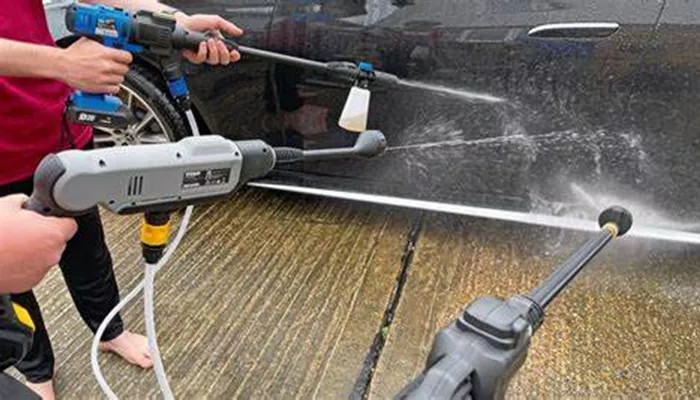Pressure washing is a highly effective method for cleaning various surfaces, from driveways and decks to building exteriors. However, many people are often taken aback by the cost associated with this service. Understanding why pressure washing can be expensive requires a closer look at several factors, including equipment costs, labor, and the nature of the cleaning task itself.
High – Quality Equipment Costs
Initial Investment in Pressure Washers
The heart of any pressure – washing operation is the pressure washer itself, and high – quality machines come with a significant price tag. Professional – grade pressure washers are designed to handle heavy – duty cleaning tasks and are built to last. They feature powerful motors or engines, durable pumps, and high – pressure hoses. For gas – powered pressure washers, engines need to be robust enough to drive the pump at high pressures consistently. These engines are often more advanced than those found in typical lawnmowers or small power tools, which contributes to their cost.
Electric – powered models, on the other hand, require high – performance motors that can withstand continuous use. The pumps in professional – grade pressure washers are typically made of materials like brass or stainless steel to resist corrosion from water and cleaning agents. They are engineered to generate and maintain high pressures, which is crucial for effective cleaning. For example, a mid – range professional pressure washer can cost anywhere from several hundred to over a thousand dollars, and top – of – the – line models can be even more expensive. This initial investment in equipment is a major factor in the overall cost of pressure – washing services.
Accessories and Additional Tools
In addition to the pressure washer itself, a variety of accessories and tools are necessary for a comprehensive pressure – washing job. Different types of nozzles are required to adjust the spray pattern and pressure. For instance, a narrow – stream nozzle is useful for removing stubborn stains, while a fan – shaped nozzle is better for covering large areas. These nozzles are precision – made to ensure consistent water flow and pressure distribution, and they can add to the overall cost.
Extension wands are also essential, especially when cleaning tall buildings or hard – to – reach areas. These wands need to be lightweight yet sturdy enough to withstand the pressure of the water. High – quality extension wands can cost a significant amount, depending on their length and material. Other accessories may include surface cleaners, which are designed to clean large, flat surfaces more efficiently. These devices often have multiple rotating nozzles that can cover a wider area in a shorter time, but they also come at a cost. The need for a range of these accessories, each tailored to specific cleaning tasks, contributes to the overall expense of pressure – washing equipment.
Market and Service – Area Considerations
Local Market Competition and Pricing
The cost of pressure – washing services can vary depending on the local market. In areas where there is high demand for pressure – washing services but a limited number of professional companies, prices tend to be higher. This is because the companies have more control over the market and can charge a premium for their services. On the other hand, in areas with a saturated market, where there are many pressure – washing companies competing for business, prices may be more competitive.
However, even in a competitive market, the cost of pressure – washing services is still influenced by the factors mentioned earlier, such as equipment costs, labor, and maintenance. In some cases, companies may offer lower prices to attract customers, but this may come at the expense of using lower – quality equipment or less – skilled labor. It’s important for consumers to be cautious when choosing a pressure – washing company based solely on price, as they may not be getting the same level of service or quality.
Service – Area Logistics
The location of the property being pressure – washed can also impact the cost. If the property is in a remote area, the pressure – washing company may need to travel a long distance to reach the site. This incurs additional costs for transportation, including fuel and wear – and – tear on the vehicles. The company may also need to factor in the time spent traveling to and from the site, as this is time that could otherwise be spent on other jobs.
In addition, if the property is in a difficult – to – access location, such as a high – rise building or a property with limited parking, it can add to the complexity and cost of the job. Specialized equipment, such as boom lifts or scaffolding, may be required to reach certain areas, and these equipment rentals can be expensive. The logistics of servicing a particular area, including travel distance and access challenges, are important considerations that contribute to the overall cost of pressure – washing services.
Conclusion
In conclusion, the cost of pressure washing is influenced by a multitude of factors. The high cost of equipment, both in terms of the initial purchase and ongoing maintenance, plays a significant role. Operational expenses such as fuel or energy costs add to the financial burden. The need for skilled labor and the time – consuming nature of the job also contribute to the overall expense. The complexity and risks associated with handling hazardous materials and the potential for property damage further drive up the cost. Additionally, market conditions and service – area logistics can impact the price that pressure – washing companies charge. While pressure washing may seem expensive, it’s important to recognize the value it provides in terms of effectively cleaning and maintaining various surfaces. By understanding these factors, consumers can make more informed decisions when choosing a pressure – washing service and can better appreciate the reasons behind the cost.
Related topics:

